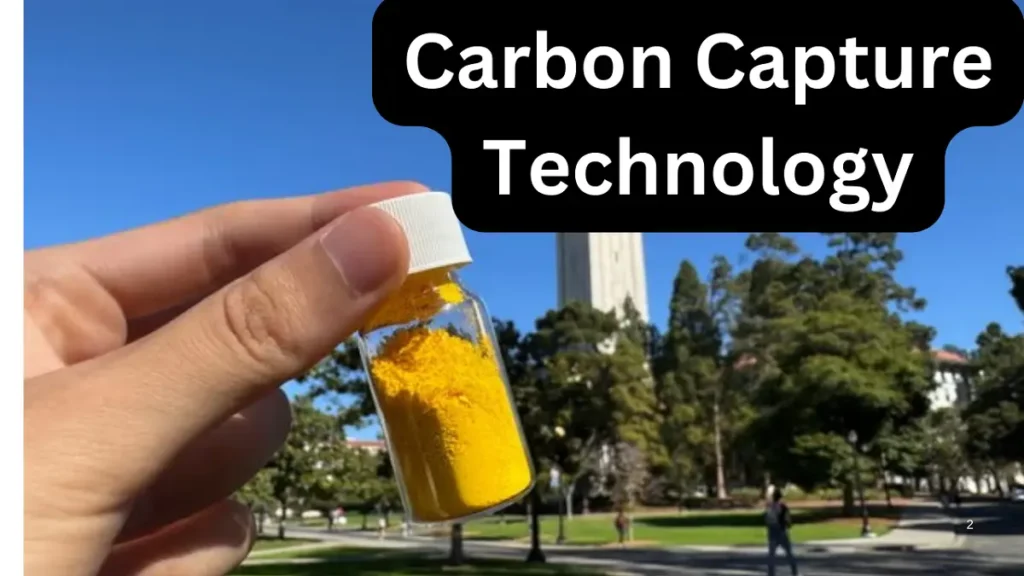As the world battles the escalating climate crisis, innovative carbon capture technology is emerging as a beacon of hope. Among these breakthroughs, a newly developed yellow powder, known as a covalent organic framework, promises to transform how we address carbon dioxide removal. This durable material is not only efficient but also scalable, making it a gamechanger for climate crisis solutions.
READ ALSO
Benralizumab for Asthma and COPD Treatment: A Gamechanger After 50 Years.
What is Carbon Capture Technology?
Carbon capture technology refers to methods and materials designed to extract carbon dioxide (CO2) from the air or industrial emissions. The goal is to mitigate the effects of greenhouse gases and slow global warming. With CO2 levels currently at 400 parts per million and rising, carbon emissions reduction is more critical than ever.
How Covalent Organic Frameworks Work
The breakthrough yellow powder utilizes covalent organic frameworks, which are porous materials with strong chemical bonds. These bonds actively pull carbon dioxide from the air, making the material a revolutionary tool for direct air capture. Unlike older systems, this framework is highly durable and can be reused hundreds of times.
The Advantages of Low-Temperature Carbon Release
One of the standout features of this carbon capture technology is its low energy requirement for carbon release. It operates at just 120°F, far lower than traditional methods. This makes it ideal for integration with existing systems at factories and power plants, where excess heat can fuel the process. This innovation not only reduces energy consumption but also lowers costs, addressing the primary challenges of scalable climate technology.
Industrial Applications of Carbon Capture
The captured carbon can be safely stored or repurposed in industrial carbon processes. For example, it can be used to carbonate beverages or in other manufacturing sectors. Such versatility makes this technology a practical and economically viable solution for reducing emissions.
Scaling Up for a Greener Future
The true potential of this sustainable material lies in its scalability. Scientists envision large-scale plants in every major city worldwide, actively capturing and storing CO2. With companies like Atoco spearheading this effort, carbon capture technology could soon become a cornerstone of urban sustainability.
Addressing the Challenges
Despite its promise, direct air capture technologies face hurdles, including the high energy intensity of moving large air volumes and the cost of materials. However, the efficiency and durability of covalent organic frameworks offer a path forward, minimizing these barriers.
The Role of Carbon Capture in Global Efforts
In the long term, carbon dioxide removal will complement renewable energy sources to meet global climate goals. While replacing coal power plants with renewables provides immediate results, direct air capture offers a safety net for future emissions.
Conclusion: The innovative carbon capture technology developed by researchers like Omar Yaghi represents a quantum leap in the fight against climate change. By integrating this sustainable material into existing systems and scaling its use globally, we can achieve significant progress in greenhouse gas mitigation. It’s time to embrace these technologies and work toward a sustainable, carbon-neutral future.
Important Link
| Platform | Link |
|---|---|
| Click Here | |
| Click Here | |
| Click Here |
By leveraging the power of direct air capture and covalent organic frameworks, we have an opportunity to reshape our planet’s trajectory. With scalable solutions and continued innovation, the dream of a cleaner, greener Earth is within reach.

